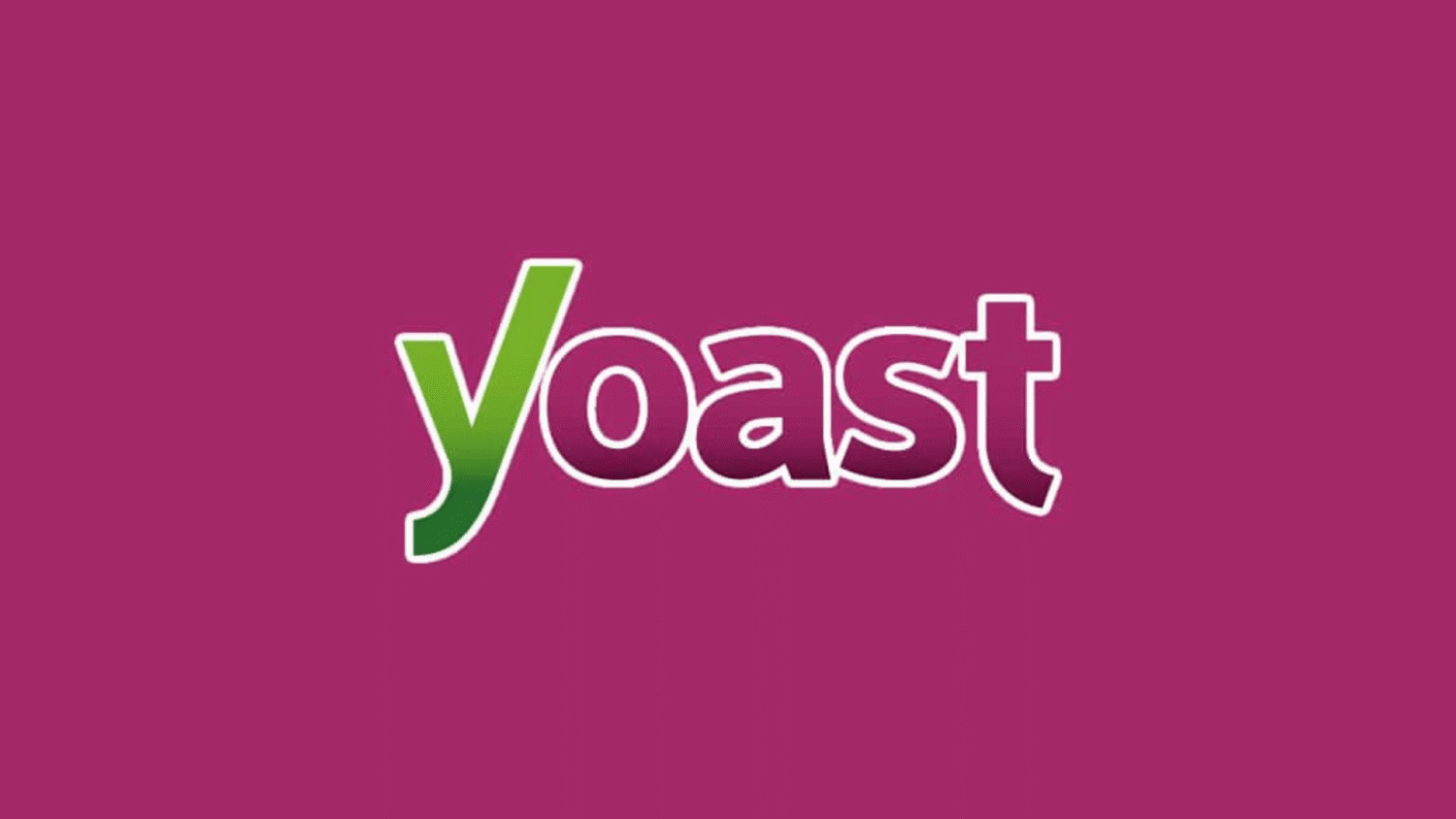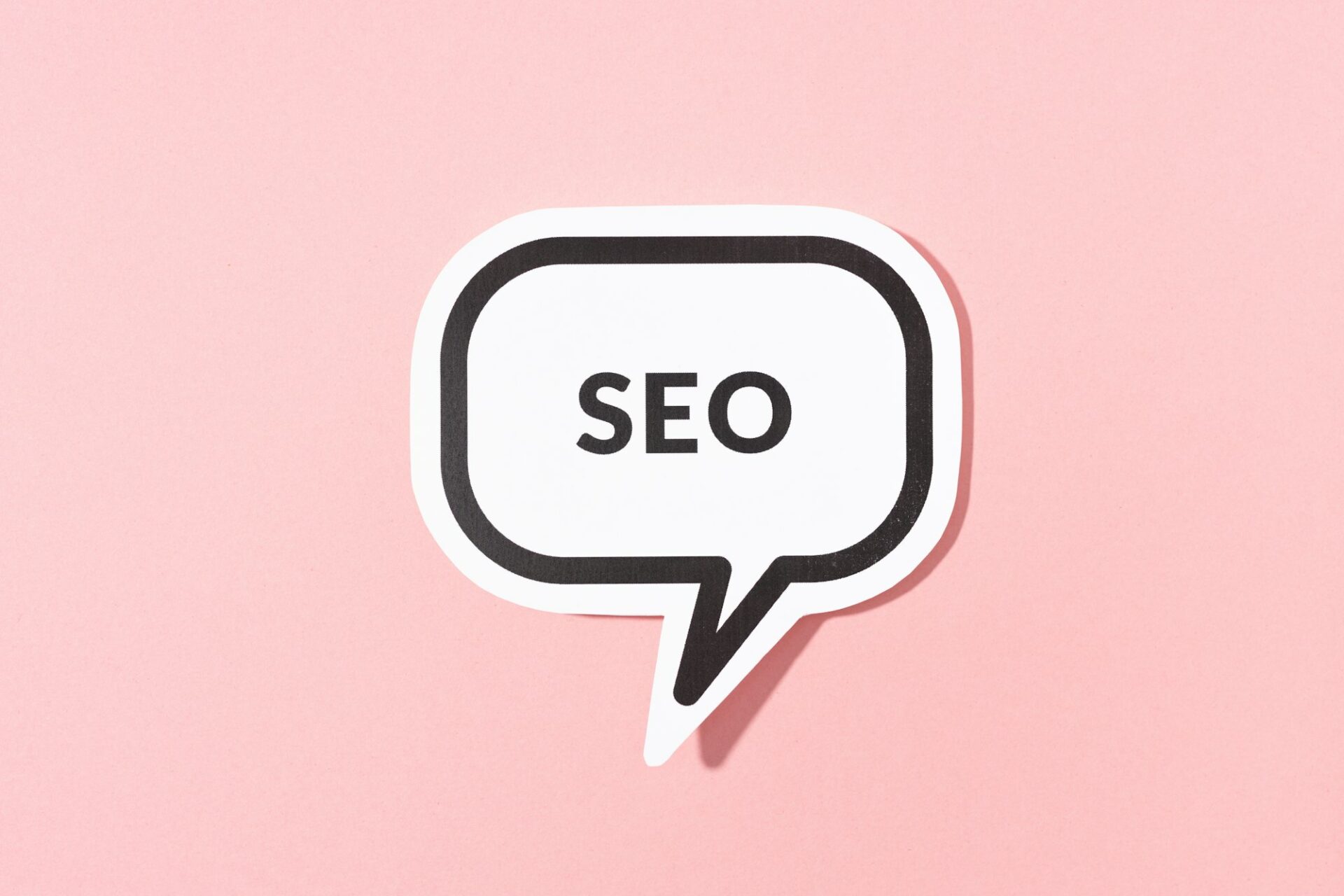
Web design – Everything you want to know!
What is web design? When creating a website – especially a homepage – you often come across the same questions. What exactly is web design,
In today’s digital world, a strong online presence is essential, and a website is often the centerpiece of that presence.
For WordPress users, this means that their website should not only be appealing and user-friendly, but also optimized for search engines. This is where SEO, or search engine optimization, comes into play.
Search engine optimization is the art and science of designing and maintaining your website so that it ranks higher in search engine results.
Why is this important?
Quite simply, the higher your website appears in the search results, the more traffic and potential customers you can attract.
But search engine optimization is a broad field with many facets. One of these, and often overlooked, is search engine optimization specifically for WordPress websites.
WordPress SEO, also known as search engine optimization for WordPress websites, is an important aspect of online marketing and search engine optimization.
The right SEO strategy offers you the chance to improve your ranking and increase your reach. In this blog, we list a few tips and tricks on how you can improve the ranking of your WordPress website.

SEO stands for “Search Engine Optimization”. It is the process of optimizing a website to increase its visibility in the organic (non-paid) search results of search engines such as Google.
SEO includes various techniques and strategies aimed at improving the quality and quantity of website traffic by increasing visibility for relevant search queries.
If you are interested in SEO consulting, please get in touch with us. We will advise you at your request. Our goal is for your website to be found on Google for your relevant keywords as soon as possible. We look forward to hearing from you!
SEO is crucial to the success of any website, including WordPress websites. Good SEO practices help to generate more organic traffic, improve user experience and increase conversion rates.
Since WordPress is one of the world’s most popular content management systems (CMS), it’s important to understand how SEO works specifically on this platform. With the right WordPress SEO strategies, WordPress websites can rank better in search results, leading to more visitors and potential customers.
Search engine optimization encompasses a variety of techniques aimed at helping your website achieve higher positions in search results. These include:
Keyword research: Understand which terms your target group is searching for and use these keywords strategically in your content.
High-quality content: Create useful, relevant and high-quality content that answers the questions and needs of your target group.
On-Page SEO: Optimize individual websites to rank for specific keywords. This includes title tags, meta descriptions and header tags.
Technical SEO: Make sure your website is technically sound, loads quickly and is optimized for mobile devices.
Backlinks: Build quality backlinks that point to your site from other websites to give your website authority and credibility.
WordPress is SEO-friendly by nature. It offers a variety of functions and plugins that make search engine optimization easier.
This also means that with a WordPress website, you are well taken care of right from the start.
WordPress is designed from the ground up to meet many of the technical requirements that search engines such as Google place on websites.
The SEO-friendly features of WordPress include clean permalinks, the ability to edit metadata for posts and pages, and the easy integration of SEO plugins such as Yoast SEO and All in One SEO Pack.
Among others also:
.
In addition, WordPress is customizable, which means that developers can implement custom WordPress SEO strategies to meet the specific needs of a website.
Choosing the right theme is an important first step in optimizing your WordPress website for search engines. An SEO-friendly theme should have the following features:
A reliable hosting provider plays a crucial role in the SEO performance of your WordPress website. The following factors should be considered:
SEO plugins are an indispensable tool for optimizing your WordPress website. Two of the most popular SEO plugins are:

Yoast SEO is one of the best-known SEO plugins for WordPress. It offers comprehensive functions for optimizing your website:
Another powerful plugin is the All in One SEO Pack. It offers similar features to Yoast SEO and is an excellent alternative:
Keyword research is a fundamental part of any SEO strategy. And is therefore also important for WordPress SEO.
It helps to identify the terms and phrases that potential visitors enter into search engines. By understanding the search habits of your target audience, you can create content that is precisely tailored to their needs and thus increase your chances of ranking well in search results.
If you are interested in SEO consulting, please get in touch with us. We will advise you at your request. Our goal is for your website to be found on Google for your relevant keywords as soon as possible. We look forward to hearing from you!
The Google Keyword Planner is a free tool from Google Ads that provides detailed insights into search volume and competition for keywords. It helps you to find relevant keywords and estimate their potential traffic.
Ahrefs is a comprehensive SEO tool that offers advanced keyword research features. It allows you to analyze search volume, keyword difficulty and competitor keywords, which is helpful in developing an effective WordPress SEO strategy.
The following factors should be considered when selecting keywords:
By carefully conducting keyword research and optimizing your content for the right keywords, you can significantly improve the visibility and ranking of your WordPress website in search engines.
Optimizing title tags and meta descriptions is crucial for WordPress SEO. These elements should be unique, concise and contain relevant keywords to maximize clicks from search results.
Header tags (H1, H2, H3, etc.) structure the content and help search engines to understand the hierarchy of your content. Use them sensibly to organize topics and strategically integrate keywords.
Integrate keywords naturally into your content to signal their relevance to search engines. Avoid keyword stuffing and pay attention to readability and naturalness.
Optimize images with meaningful alt tags, descriptive file names and compression to improve loading times and increase visibility in image searches.
Use internal links to connect topic-relevant pages and improve navigation for users and search engines. Use meaningful anchor texts.
Optimize the URL structure for readability and relevance. Avoid long, cryptic URLs and use keywords to succinctly describe the content of the page.
An often overlooked but critical component of search engine optimization is the URL structure of your website. URLs are not just simple addresses of your websites, they are also an important factor for ranking and user-friendliness.
A well-structured URL should include the following:Clarity and simplicity: The URL should be easy to read and understand, both for users and for search engines.
Use of keywords: Integrate relevant keywords into your URLs, but avoid keyword stuffing.
Consistency: Maintain a logical and consistent structure so that users and search engines can easily understand the structure of your website.
By making your URLs SEO-friendly, you not only improve the ranking of your website, but also increase clarity and user-friendliness, which in turn can lead to higher user engagement and conversion.
In the next sections, we will look in more detail at how you can create the perfect WordPress SEO-friendly URL structure for your WordPress website.

Customizing the URL structure in WordPress is a crucial step in optimizing your search engine optimization efforts and helping your website stand out from the crowd. Fortunately, WordPress makes this process pretty simple.
Here’s a detailed guide on how to customize the URL structure of your WordPress website to get the most out of your SEO strategy.
Login to the WordPress dashboard: Start by logging into your WordPress dashboard.
This is your central point of contact for all administrative tasks on your website.
Navigate to the settings: On the left sidebar of the dashboard, you’ll find a variety of options. Hover your cursor over “Settings” and you will see a drop-down list. Click on “Permalinks” to open the permalink settings.
You can see various options for your URL structure in the permalink settings:
If you are interested in SEO consulting, please get in touch with us. We will advise you at your request. Our goal is for your website to be found on Google for your relevant keywords as soon as possible. We look forward to hearing from you!
For blogs: Using the “post name” is often the best choice as it ensures that your URLs are meaningful and keyword-rich. This improves clarity for users and search engines.
For company pages: Here, a shorter URL may be more beneficial as it is easier to remember and share. In this case, a custom structure, perhaps containing just the category and post name, could be ideal.
Once you have selected a structure that best suits your website, don’t forget to click on “Save changes” to apply your new permalink settings.
Note:
Be careful when changing the permalink structure on an existing website, as this can lead to “404 not found” errors for pages that are already indexed. In such cases, it is advisable to create redirects for old URLs to ensure that users and search engines are directed to the correct page.
By adapting the URL structure of your WordPress website, you not only improve the SEO ranking, but also provide a better user experience. A well-thought-out URL structure can make all the difference when it comes to presenting your content in the digital world.
A fast-loading website improves the user experience and SEO ranking. Search engines prefer pages that load quickly and users stay longer on fast websites.
Implement caching techniques, optimize images for fast loading and use a Content Delivery Network (CDN) to bring content closer to users and minimize loading times.
Optimize your website for mobile devices with a responsive design. This ensures that it looks good on all screen sizes and is user-friendly, which is important for both users and SEO.
SSL/HTTPS improves the security of your website and is a ranking factor for Google. Make sure your WordPress website is secure with a valid SSL certificate.
Create an XML sitemap for your WordPress website to help search engines crawl and index your content efficiently. Submit it to the Google Search Console and other search engines.
Use robots.txt to control search engines which areas of your website should be crawled. Use meta robots tags to index or exclude specific pages.
Create high-quality content that is informative, relevant and appealing to your target group. Focus on user needs and interests.
Update your content regularly to keep it up to date and increase its relevance for search engines. Also take feedback and trends into account.
Use categories and tags wisely to organize content and make it easier for users to navigate. This also helps search engines to understand the connection between different content.
Structure your content clearly with headings, paragraphs and lists. Improve readability with clear language and avoid long paragraphs.
Integrate multimedia content such as videos and infographics to improve the user experience and increase the time spent on your website. Optimize them for SEO, with descriptive titles and alt tags.
By implementing these WordPress SEO strategies, you can improve your website’s visibility in search engines, generate more traffic and achieve long-term success.
.
.
.
Yoast SEO is an excellent tool to improve your WordPress SEO. Here’s a detailed guide on how to use Yoast SEO:
Yoast SEO will analyse your content and give you feedback on how well you are optimized for this keyword.
If you are interested in SEO consulting, please get in touch with us. We will advise you at your request. Our goal is for your website to be found on Google for your relevant keywords as soon as possible. We look forward to hearing from you!
The All in One SEO Pack is another great plugin to improve your WordPress SEO. Here is a detailed guide:
Here you can make the basic configuration, such as setting your homepage title, description and keywords.
Other useful SEO plugins
In addition to Yoast SEO and All in One SEO Pack, there are other useful SEO plugins that can improve your WordPress SEO:
1. Rank Math
.
.
2. SEOPress
Structured data helps search engines to better understand the content of your website. By implementing schema markup, you can get rich snippets in the search results, which can lead to higher click-through rates.
To implement Schema Markup in WordPress, you can use special plugins:

Local SEO is important if you run a local business and want to target customers in your area. It helps you to be found better in local search results.
A Google My Business profile is essential for local SEO. It helps you to be visible in local search results and on Google Maps.
.
.
There are special plugins and tools that can help you improve your local SEO:
Create special pages on your website that focus on local keywords. For example, you can create a separate page for each city or region you serve. Make sure that these pages contain relevant information and local keywords.
Backlinks are links from other websites to yours. They are an important ranking factor for search engines as they signal the authority and relevance of your website.
.
If you are interested in SEO consulting, please get in touch with us. We will advise you at your request. Our goal is for your website to be found on Google for your relevant keywords as soon as possible. We look forward to hearing from you!
.
.
.

An indispensable tool for tracking visitor numbers, user behavior, traffic sources and many other metrics. It provides comprehensive reports and analytics to help you understand the performance of your website.
Helps you to monitor and manage the visibility of your website in Google search results. You can use it to identify crawling errors, check indexing status and analyze search queries.
A comprehensive SEO tool that offers keyword research, competition analysis, backlink monitoring and more.
Another powerful tool for analyzing backlinks, organic search queries and competition research.
.
.
Carry out regular SEO audits to check the health of your website and identify potential problems. Use tools such as SEMrush, Ahrefs and Screaming Frog to carry out comprehensive analyses and receive recommendations for improvement.
Duplicate content can cause search engines to struggle to identify the most relevant version of a page, which can lead to your website being devalued in search results. Here are some measures to avoid this problem:
Canonical tags help search engines to recognize which version of a page should be considered the main version.
This is particularly useful if you have similar or identical content on multiple URLs. To set canonical tags, you can use plugins such as Yoast SEO or All in One SEO Pack, which support this functionality.
Make sure that all content on your website is unique and original. Use tools such as Copyscape or Grammarly to ensure that your texts have not been copied.
Regularly created, high-quality and unique content not only improves your SEO, but also the trust and satisfaction of your users.
As more and more users access websites via mobile devices, mobile optimization is essential. Google uses mobile-first indexing, which means that the mobile version of your website is considered the main version.
Use a responsive WordPress theme that automatically adapts to different screen sizes. Themes such as Astra, OceanWP and GeneratePress are good options.
Test your website regularly with tools like Google’s Mobile-Friendly Test to make sure it looks and works well on all devices.
Regularly check the mobile usability of your website with Google Search Console. Fix any errors found and optimize your content for mobile users.
This can include adjusting font sizes, improving touch operation and minimizing pop-ups that could disrupt the user experience.
If you are interested in SEO consulting, please get in touch with us. We will advise you at your request. Our goal is for your website to be found on Google for your relevant keywords as soon as possible. We look forward to hearing from you!
Keyword-Stuffing ist eine veraltete SEO-Technik, bei der Keywords unnötig oft wiederholt werden. Dies kann zu einer Abwertung Deiner Website durch Suchmaschinen führen.
Integriere Keywords organisch und natürlich in Deinen Inhalt. Schreibe für Deine Leser und nicht nur für Suchmaschinen. Fokussiere Dich auf die Erstellung nützlicher, informativer Inhalte, die Deine Zielgruppe ansprechen.
Verwende Keywords in Überschriften, Absätzen und Bildbeschreibungen, aber übertreibe es nicht.
Verwende semantisch verwandte Begriffe, um die Relevanz Deiner Inhalte zu erhöhen. Tools wie Google’s Keyword Planner oder SEMrush können Dir dabei helfen, geeignete LSI-Keywords zu finden.
Diese verwandten Begriffe und Phrasen helfen Suchmaschinen, den Kontext Deiner Inhalte besser zu verstehen und erhöhen die Chancen auf höhere Rankings.
Technical SEO is the basis for a well-functioning and visible website. Here are some important technical aspects you should consider:
Optimized loading times are crucial for the user experience and SEO. Use tools like Google PageSpeed Insights or GTmetrix to analyze the speed of your website and get suggestions for improvement.
Image compression, browser caching and the use of a content delivery network (CDN) such as Cloudflare can significantly improve loading times.
Use a clear and logical URL structure that is easy to understand for both users and search engines. Avoid unnecessarily long URLs and make sure they contain relevant keywords.
For example, “webhead.at/services” is better than “webhead.at/123456”.
Make sure that your website runs over HTTPS. An SSL certificate encrypts the data transfer between the user and your website, which increases security and strengthens user trust.
Google prefers secure websites and marks insecure websites accordingly in the search results.

AMP (Accelerated Mobile Pages) is an open source project from Google that aims to speed up the loading times of mobile pages. Here are some steps to implement AMP on your WordPress website:
Install and configure the AMP plugin for WordPress to optimize your pages for mobile devices and reduce loading times. The official AMP plugin for WordPress is a good starting point.
Make sure that the design of your AMP pages matches the rest of your website and provides a consistent user experience.
Use Cloudflare or another CDN to improve the loading speed of your website. Setting up a CDN is usually easy and only requires a few adjustments to your DNS settings.
Cloudflare offers both free and paid plans that include various performance and security features.
Lazy loading is a technique in which images and videos are only loaded when they come into the user’s visible area. This can improve the loading times of your website and optimize the user experience.
Use plugins such as WP Rocket or Lazy Load by WP Rocket to delay the loading of images and videos. These plugins are easy to install and configure and can significantly improve the overall performance of your website.
Browser caching enables frequently used resources to be stored locally in the user’s browser, which means that future page views can be faster.
Install and configure caching plugins such as W3 Total Cache or WP Super Cache to shorten the loading times of your website.
These plugins offer a variety of features to optimize the performance of your website, including browser caching, database optimization and minification of CSS and JavaScript files.
The use of voice search is increasing and this has a significant impact on SEO strategies. Voice search queries often differ from traditional search queries as they are more natural and conversational.
.
User experience (UX) is becoming increasingly important for SEO, as search engines such as Google consider user satisfaction to be an important ranking factor.
.
User-friendly websites have a lower bounce rate and better chances of higher rankings.
Artificial intelligence (AI) and machine learning are playing an increasingly important role in SEO. Search engines such as Google use algorithms based on AI to improve search results and optimize the user experience.
Continuously follow the latest developments and trends in SEO to adapt your strategies accordingly.
Make sure your website and SEO strategies are flexible enough to adapt to future changes in search engine algorithms.
A company was able to increase its organic traffic by 150% within a year by implementing a comprehensive SEO strategy. This was achieved through a combination of on-page optimization, technical SEO and a strong content marketing strategy.
An e-commerce website improved its rankings and increased sales by implementing AMP, using structured data and conducting regular SEO audits.
A website suffered a massive loss of traffic after pursuing an aggressive keyword stuffing strategy. This led to a devaluation by search engines and a drastic reduction in organic traffic.
A blog neglected mobile optimization and experienced a decline in mobile users. By implementing a responsive design and optimizing the mobile user experience, traffic was restored.
If you are interested in SEO consulting, please get in touch with us. We will advise you at your request. Our goal is for your website to be found on Google for your relevant keywords as soon as possible. We look forward to hearing from you!
A travel blog used targeted keyword research and internal linking strategies to rank for specific travel destinations. This led to a significant increase in traffic and user dwell time.
A local business optimized its website for local search queries and created location-specific content. This improved visibility in local search results and led to increased customer traffic.
Without indexing, there is no chance of appearing in the search results! Checking the visibility settings is important! Check them so you can see whether your website can be found and indexed by search engines like Google.
Check whether the “Search engine visibility” option is deactivated under “Settings & Read” in your WordPress dashboard.
Choose an SEO-friendly theme! The reasons why an SEO-friendly theme is important are:
Create high-quality content! Create detailed, informative and unique content that offers real added value. Good content is shared and linked to more often, which increases visibility and boosts traffic!
Good content also keeps more visitors on your website, which signals to search engines that your website is good. Provide good content on a regular basis to ensure that search engines and users visit your website more often.
Optimize all images on your website and use the right keywords that appeal to your target group!
By using relevant keywords in titles, headings, meta descriptions and in the content of your posts and pages, you can increase the ranking of your website for specific search queries.
This helps search engines understand what your WordPress website is about. This way, they will search for you when your target group searches for certain phrases and you will be ranked higher.
Images can not only make your website more visually appealing, but also improve your WordPress SEO if they are optimized correctly: For example, you can ensure that your website loads faster by reducing the file size.
This in turn has a positive impact on your user experience and your SEO ranking! Image content, text and quality: it all plays a major role!
The use of internal links is extremely important! Internal links help to strengthen the structure of your website and help search engines like Google to better understand the thematic context of your content. They also improve the user experience by making navigation easier! Attention: But don’t use too many links!
If you are interested in SEO consulting, please get in touch with us. We will advise you at your request. Our goal is for your website to be found on Google for your relevant keywords as soon as possible. We look forward to hearing from you!

What is web design? When creating a website – especially a homepage – you often come across the same questions. What exactly is web design,

In today’s digital world, a strong online presence is essential, and a website is often the centerpiece of that presence. For WordPress users, this means

In today’s digital world, OnPage Optimization is an indispensable tool for improving the visibility of your website in search engines. While many rely on off-page
webhead is a professional and experienced IT company based in Vienna—the IT company for all your digital needs. We are your competent partner for IT services such as WordPress, digitization, web design, website development & search engine optimization. Together we create and perfect your online presence.
All information subject to errors, typing errors and changes
Wir rufen Sie spätestens am nächsten Werktag zurück!
You need to load content from reCAPTCHA to submit the form. Please note that doing so will share data with third-party providers.
More InformationMit “Senden” habe ich die Datenschutzrichtlinien und die AGB webheads gelesen und stimme diesen ausdrücklich zu.
We will call you back no later than the next working day!
You need to load content from reCAPTCHA to submit the form. Please note that doing so will share data with third-party providers.
More InformationWith “Send” I have the Privacy Policy and the GTC webheads and I expressly agree to them.